[javascript protected email address]
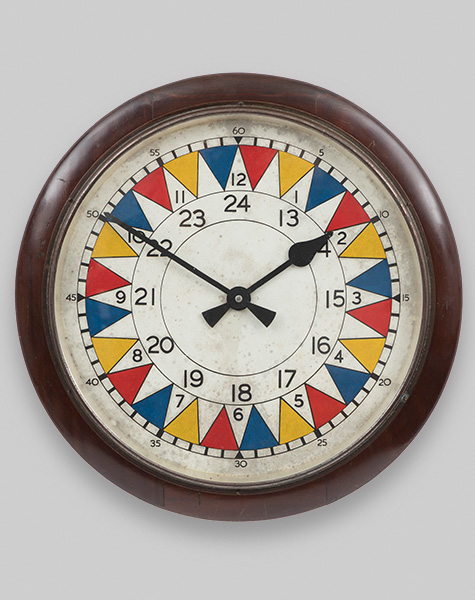
RAF WW11 Electric Clock

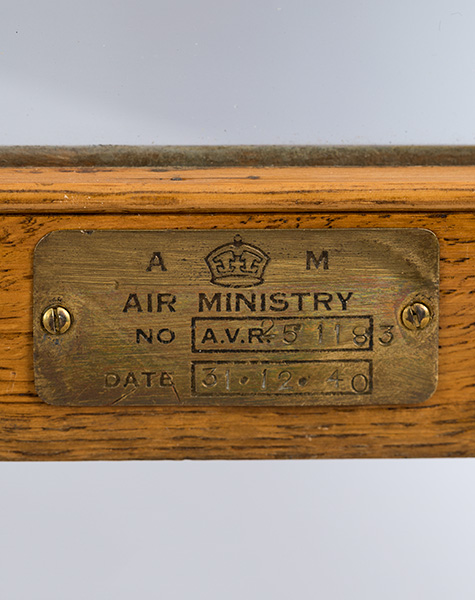
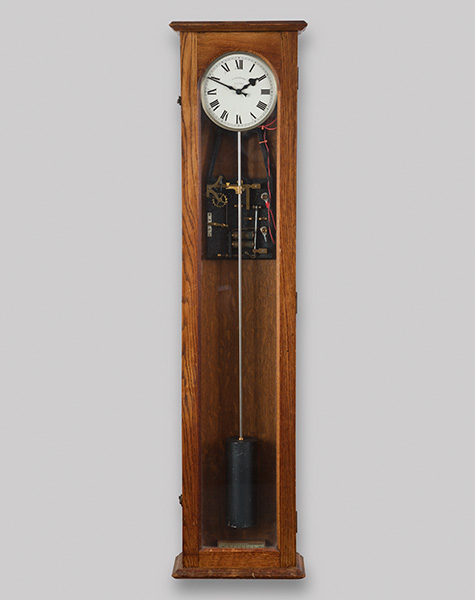
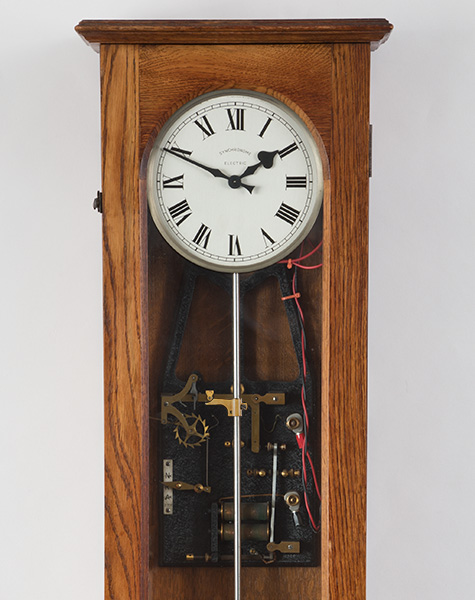
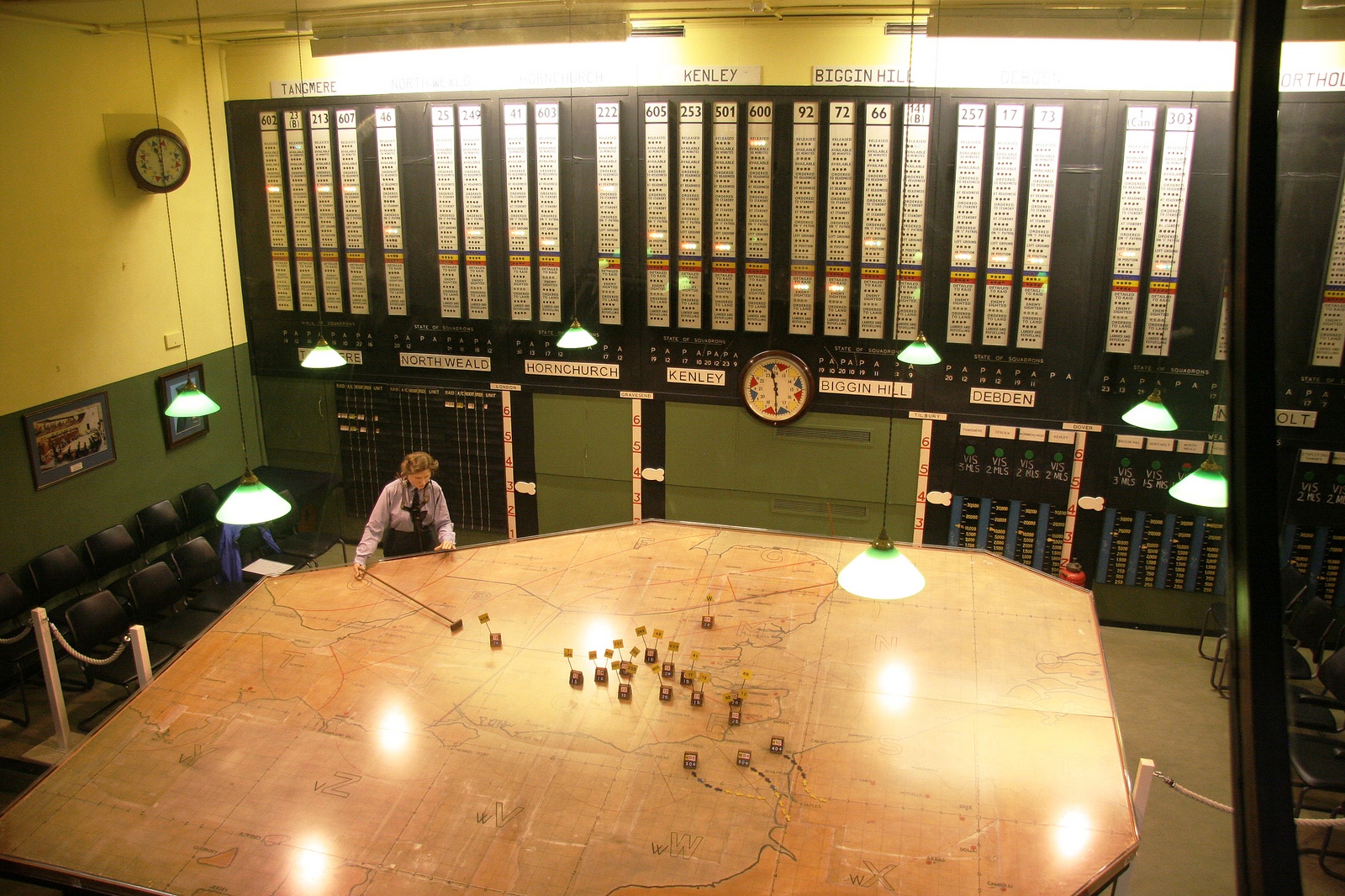
Circa Dated 31st December 1940
Sold
Sector Clock 22 ½ inches diameter - Master Clock 50 ½ inches high
An extremely rare second world war RAF electric sector slave dial with Synchronome Master; made for the Royal Observer Corps. The Slave sector clock having an 18-inch diameter painted iron dial with blue, red and yellow inward-pointing triangles every 2-½ minutes with outer markers and inner 12 and 24 markers and counterbalanced black painted hands. The small electro-mechanical movement receiving a 30 second impulse from the Master. The oak-cased Master clock is signed SYNCHRONOME ELECTRIC on the silvered dial with Roman numerals and blued steel spade hands, the movement of typical Synchronome form with pawl and wheel ‘escapement’ and cylindrical bob pendulum and beat scale in the base. The inside of the front door is applied with a brass plaque engraved AIR MINISTRY No. A.V.R. 251183 DATE 31.12.40 Sector clock 22-½ inches diameter Master clock 50-½ inches high The RAF sector clock formed a vital role in the fight for British air supremacy during the Second World War. The vast majority of surviving sector clocks are those with mechanical movements which were generally distributed throughout the Royal Air Force and their airfield bases. However the important work was done by just a few electro-mechanical master and slave sector clocks, which were made specifically for the Royal Observer Corps. It was these electric clocks that helped win the Battle of Britain. The Royal Observer corps was started by the army but in 1929 they were absorbed into the Royal Air Force, which made sense given they worked solely in conjunction with the RAF. In 1936 Air Marshall Dowding took over the Observer Corps and under his brilliant leadership he oversaw a new Air Defence System, which expanded the country’s warning and reporting system using a complex of radar towers and observation posts throughout the United Kingdom. With great foresight this clever system was accomplished just before the outbreak of war. The information was taken from radar and phoned in from hundreds of Observer Posts and gathered by vital filter stations, which in turn reported to the Fighter Command at Biggin Hill. When a group of enemy aircraft were discovered, either by the radar system and/or one of the hundreds of observer posts around Britain, the information regarding bearing, height and numbers was assimilated by one of 15 Group Filter Command bunkers around the country. These bunger rooms housed in underground were manned 24-hours a day by 30-40 men and women in the Royal Observer Corps. The initial position of a group of enemy planes was plotted on the famous grid tables using markers which held the following information – 1. F/H or U for Friendly, Hostile of Unidentified 2. Serial number of the raid 3. Strength of numbers 4. Height in the air Following each marker was a trail of colour counters, each one coded from the sector clock to give an up-to-date 5-minute position of each group of hostile aircraft. The initial colour being when contact was first recorded and then the colours changed every five minutes according to the coloured sector that the minute hand was over. The colours formed a wake behind the advancing marker and that up-to-date position and information was passed by the filter station to Fighter Command whose job it was the scramble the correct squadron of Spitfires and Hurricanes at the right time so they could intercept the enemy with the maximum amount of fuel on board to reach the enemy with enough time to put up a good fight before having to return to base before their fuel ran out. Sector clocks initially had a different colour triangle every 10 minutes. By 1935 this was changed to every five minutes and in September 1943 there was deemed so much information to assimilate that the order was given to repaint all the sector dials to change colour every 2-½ minutes – as in the present example. The sector clocks were regarded as top secret and when being ordered from the General Post Office (GPO) they were referred to as “special timing equipment”. The mechanical sector clocks were made in batches of thousands, they were painted with the RAF symbol and their coloured triangles faced outwards. Mechanical sector clocks were never actually used for their true purpose by the Royal Observer Corps; that job was given to the tiny number of electro mechanical master clocks with their slave sector dials. This accounts for the fact that there are perhaps only as many as one electric sector clock for every 100-200 mechanical examples that survive to this day.
